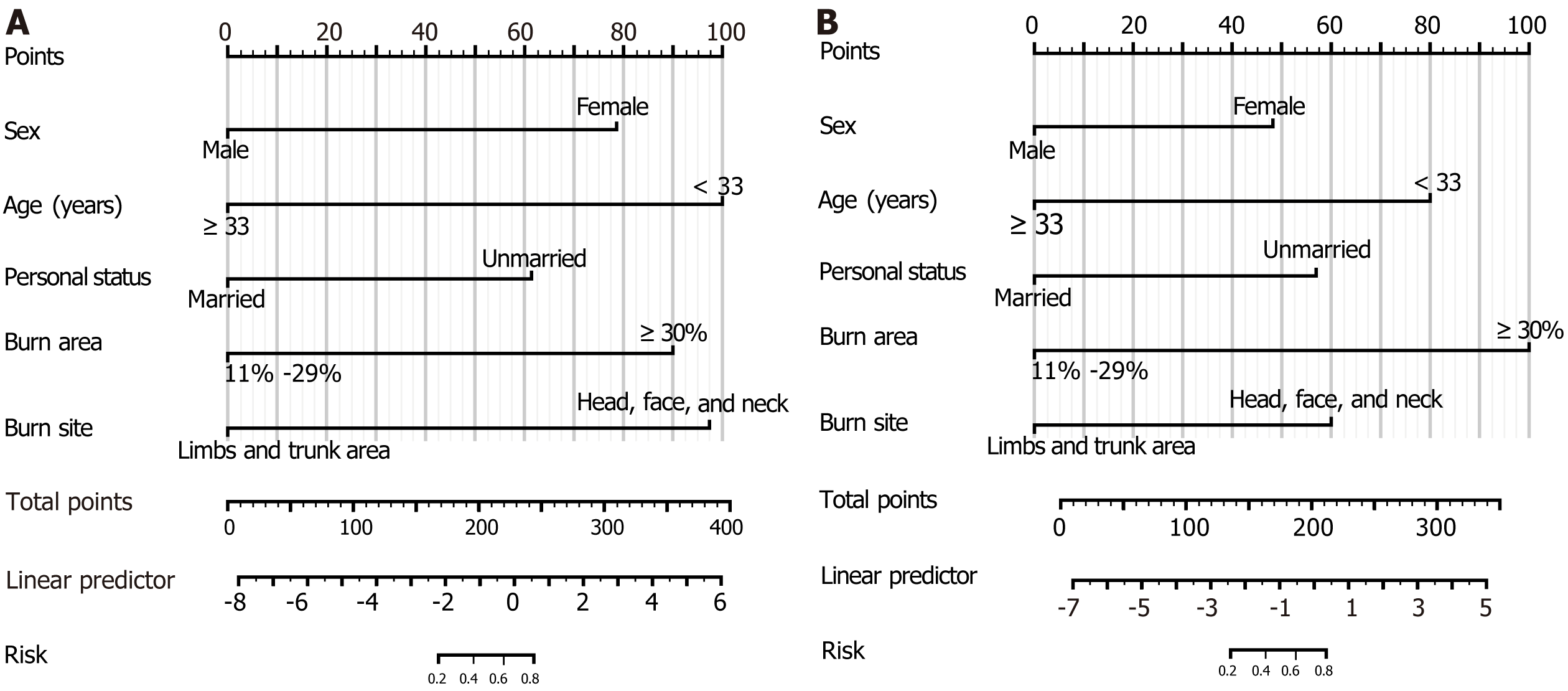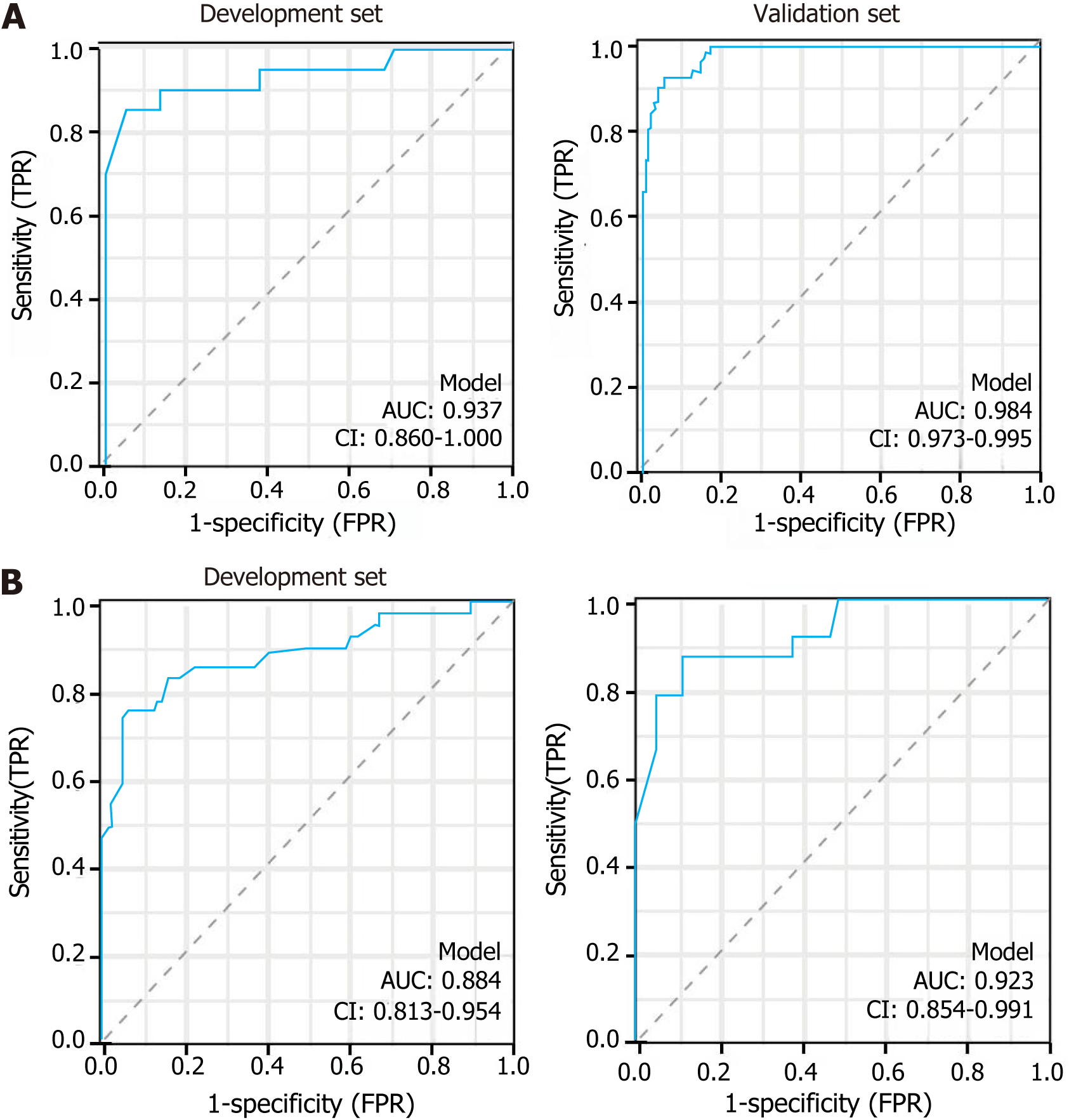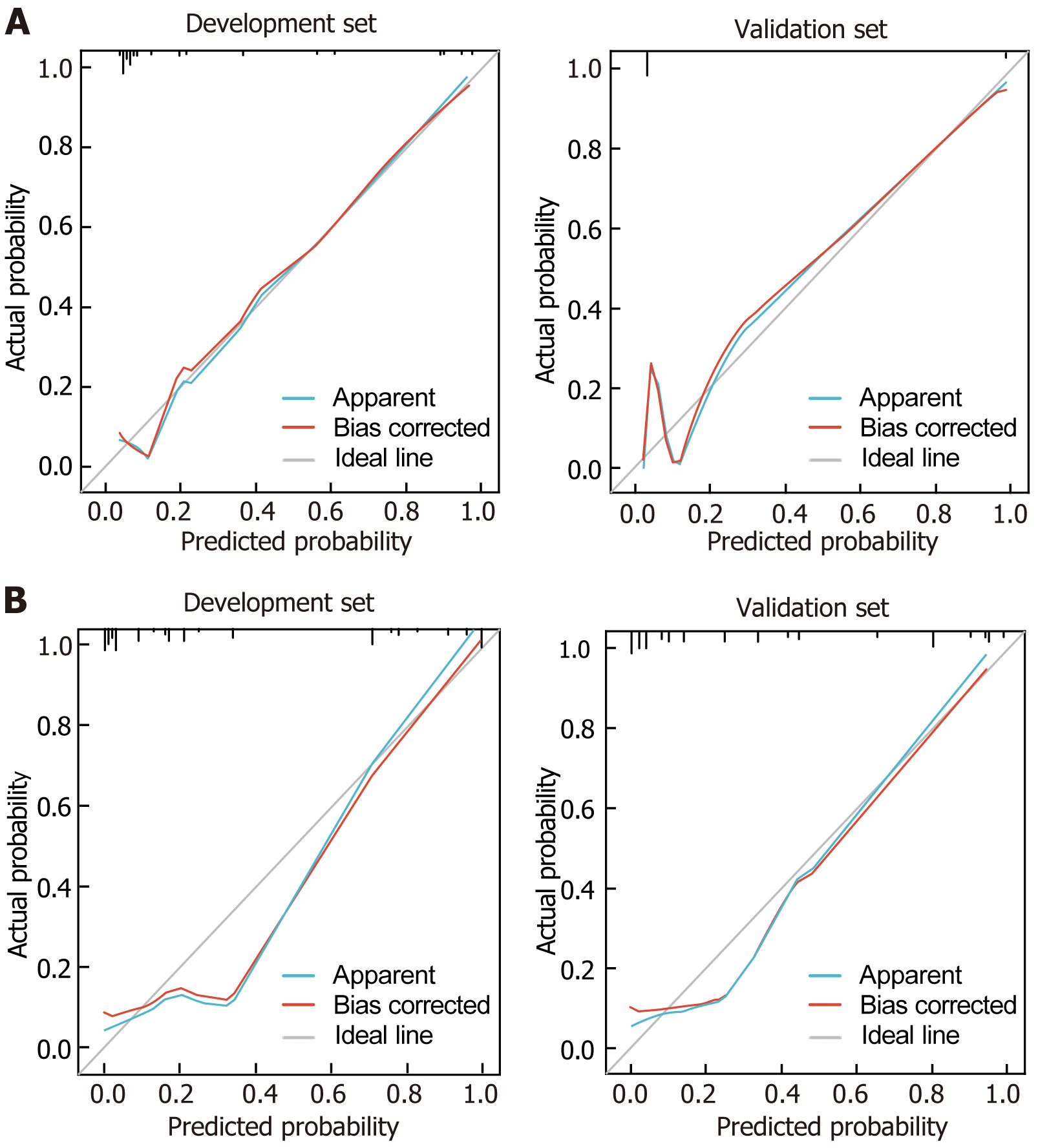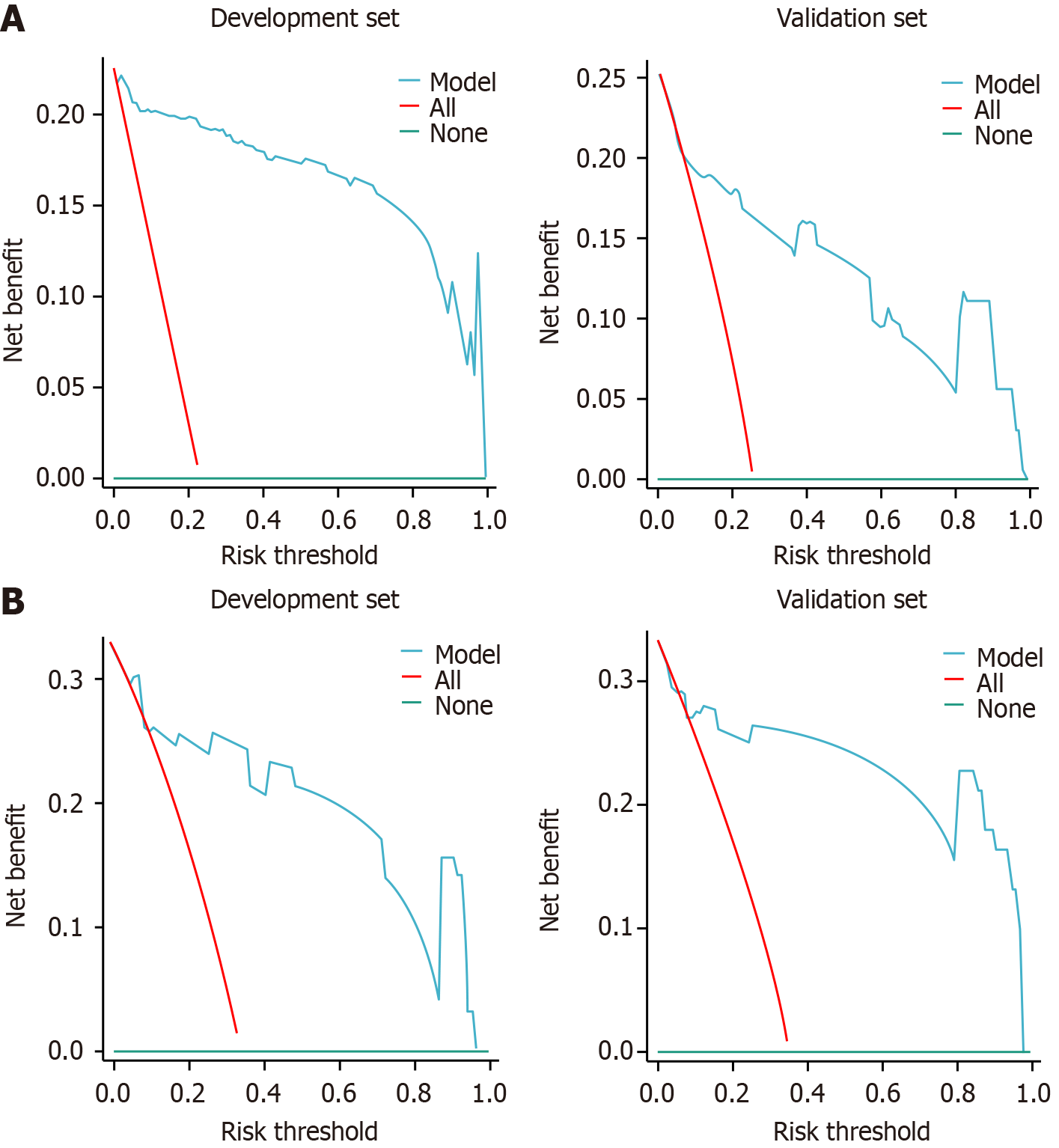Copyright
©The Author(s) 2024.
World J Psychiatry. Aug 19, 2024; 14(8): 1233-1243
Published online Aug 19, 2024. doi: 10.5498/wjp.v14.i8.1233
Published online Aug 19, 2024. doi: 10.5498/wjp.v14.i8.1233
Figure 1 Nomogram for predicting the risk of anxiety and depression in patients with non-mild burns.
A: Anxiety; B: Depression.
Figure 2 Nomogram receiver operating characteristic curve analysis for predicting the risk of anxiety and depression in patients with non-mild burns in the development and validation sets.
A: Nomogram receiver operating characteristic (ROC) curve for post-burn anxiety in the development and validation sets; B: Nomogram ROC curve for post-burn depression in the development and validation sets. FPR: False positive rate; AUC: Area under the receiver operating characteristic curve; TPR: True positive rate.
Figure 3 Nomogram calibration curve analysis for predicting the risk of anxiety and depression in patients with non-mild burn in the development and validation sets.
A: Nomogram calibration curve for post-burn anxiety in the development and validation sets; B: Nomogram calibration curve for post-burn depression in the development and validation sets.
Figure 4 Decision curve analysis for the nomogram predicting the risk of anxiety and depression in patients with non-mild burn in the development and validation sets.
A: Decision curve analysis (DCA) for the nomogram of post-burn anxiety in the development and validation sets; B: DCA of the post-burn depression nomogram in the development and validation sets.
- Citation: Chen J, Zhang JF, Xiao X, Tang YJ, Huang HJ, Xi WW, Liu LN, Shen ZZ, Tan JH, Yang F. Nomogram for predicting the risk of anxiety and depression in patients with non-mild burns. World J Psychiatry 2024; 14(8): 1233-1243
- URL: https://www.wjgnet.com/2220-3206/full/v14/i8/1233.htm
- DOI: https://dx.doi.org/10.5498/wjp.v14.i8.1233
















